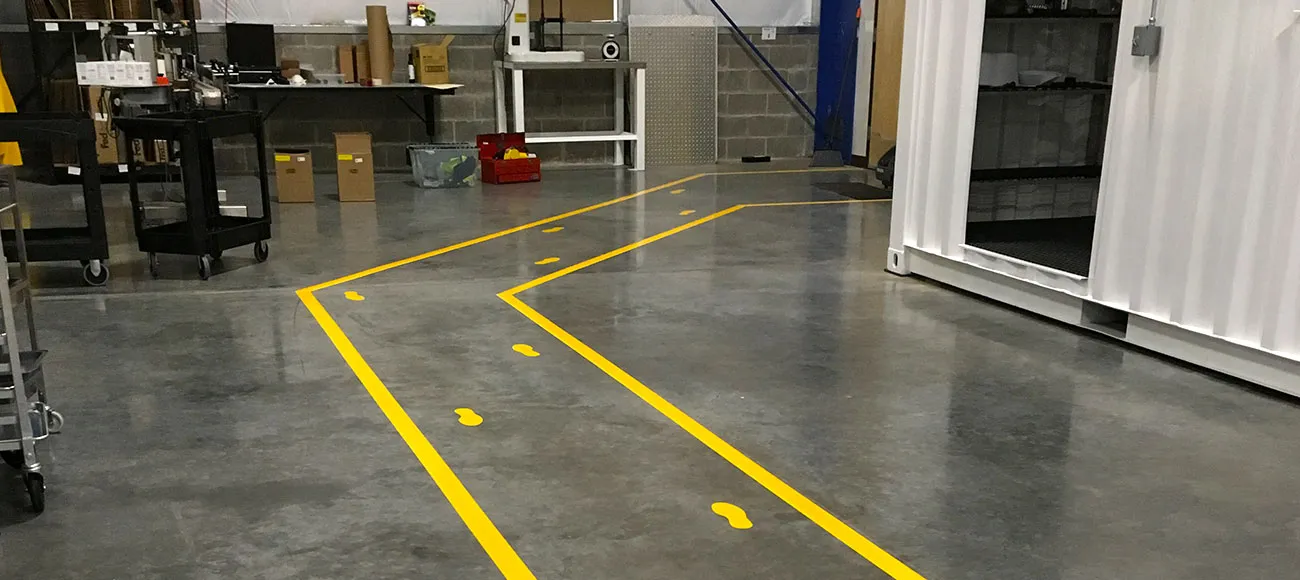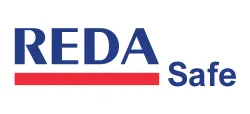Implementing Floor Marking for Enhanced Facility Safety

Introduction
Implementing floor markings is a straightforward and cost-effective method to boost safety in any facility. By selecting high-quality industrial floor marking products, businesses can not only reduce expenses but also significantly decrease the risk of worker injuries and enhance overall productivity.
However, before integrating floor marking solutions, it's crucial to engage in thorough planning. It's important to address several key questions to ensure the initiative is beneficial rather than detrimental. Remember, consistent efforts toward enhancing safety are vital for achieving long-term improvements. Ultimately, the goal is to create a safer and more secure working environment for everyone.
Advantages of Implementing Floor Marking Techniques
Implementing signs, tape, or paint for floor marking in facilities brings enduring benefits. Industrial-grade floor markings, designed to withstand harsh conditions, provide long-lasting safety for employees when properly maintained. Beyond meeting OSHA standards and adhering to ANSI guidelines, the primary motivation for floor marking is to minimize workplace injuries. This aim is encapsulated in three key advantages offered by floor marking strategies:
- Enhanced Organization: The use of floor tape and signs aims to streamline workplace organization. Delineating specific zones for forklifts and pedestrian traffic helps maintain clear and unobstructed pathways, ensuring both machinery and personnel move safely and efficiently. This organization extends to creating tidy work cells, where every item has its designated spot, contributing to a clutter-free environment.
- Boosted Employee Engagement: Floor markings facilitate better engagement by providing clear, immediate guidance on safety practices and operational procedures, such as personal protective equipment (PPE) requirements or inspection protocols. This clarity empowers employees to participate more actively in maintaining a safe and efficient workplace.
- Improved Visual Communication: Introducing floor markings significantly enhances communication within the facility. By offering essential safety information visually, these markings help employees avoid hazards, fostering a culture of safety and compliance.
The overarching aim of reducing workplace injuries is effectively supported by the visual cues provided by floor markings. These cues not only promote safer behavior but also encourage adherence to company policies, leading to a more orderly and productive work environment. The correlation between organization and safety is clear: a well-organized workspace naturally supports safer practices.
The ripple effects of floor marking — from reducing injuries and enhancing employee engagement to fostering a more organized environment — underscore the value of this approach. With the dual benefits of boosting efficiency and enhancing employee satisfaction, floor marking is an indispensable tool for creating a safer, more productive workplace.
Understanding OSHA Guidelines for Floor Marking
When enhancing safety in a facility, it's crucial to align with relevant government standards. OSHA's regulations, particularly under 29 CFR 1910.176, provide specific guidelines for floor marking. One key requirement from OSHA is that floor marking lines must be at least 2 inches wide to ensure they are easily visible. Optimal visibility is achieved with lines between 2 to 6 inches wide, according to OSHA's recommendations.
Following OSHA's straightforward standards is crucial for compliance. Without a clear understanding of these regulations from the start, there's a risk of having to redo the floor markings to meet OSHA's specifications. Ensuring compliance from the outset not only enhances safety but also avoids the potential need for costly adjustments.
Exploring the Role of Color-Coding in Floor Marking According to ANSI Standards
When focusing on facility safety improvements, it's essential to navigate the specific regulations applicable to your environment. OSHA's rule 1910.176(a) emphasizes the need for clear, safe pathways where mechanical equipment is used, ensuring aisles and passageways are free from obstructions and hazards. This rule also mandates that permanent aisles and passageways be "appropriately marked," a directive that may leave companies seeking more detailed guidelines.
To fill in the details, the ANSI Z535 series comes into play, offering comprehensive standards for facility markings, including design and color-coding. While OSHA's regulations incorporate some of ANSI's earlier color-coding standards by reference, the full scope of ANSI Z535, which outlines the best practices for facility marking, provides a more in-depth approach to safe and effective color-coding.
Specifically, OSHA's regulation 1926.200 highlights the incorporation of ANSI standards into its rules, underscoring the importance of adhering to these additional guidelines for accident prevention signs and tags. This integration effectively elevates the originally voluntary ANSI standards to a compulsory status under OSHA regulations.
Although OSHA has yet to adopt the latest ANSI Z535.1 - Z535.6 color-coding standards, these guidelines remain the gold standard for floor marking, signage, and other visual communication strategies in the workplace. Adopting these best practices not only ensures compliance but also significantly enhances safety and organization within any facility.
Top 3 Cost-Effective Strategies for Enhancing Facility Safety
Enhancing occupational safety can often be achieved with straightforward and accessible tools. By simply applying vinyl tape to identify hazardous zones, storage areas, and sections with heavy forklift activity, you can significantly boost safety in your facility immediately.
Here are three budget-friendly measures to swiftly elevate safety standards for everyone on-site:
- Evacuation Route Markings: Utilize floor tape to outline escape paths leading outside the building. Opt for glow-in-the-dark options to ensure these paths are visible even during power outages, allowing employees to exit the premises swiftly and securely.
- Identification of Emergency Equipment: Clearly mark the locations of crucial emergency gear, including fire extinguishers and eyewash stations, with floor tape. This ensures that in an emergency, employees can quickly locate and use these tools effectively.
- Aisle and Pathway Demarcation: Prevent common injuries related to forklift operations by using floor tape to define permanent aisles and pathways. Employing colored tapes can further enhance safety by integrating specific color-coded messages into the safety protocol.
The durability and cost-effectiveness of floor markings make them an ideal choice for long-term safety improvements in any facility. By implementing these simple yet effective strategies, you can create a safer work environment that protects both your employees and your bottom line.
Make Worker Safety a Top Priority!
Ensuring worker safety requires a thorough understanding and prioritization of various occupational hazards. These hazards fall into six main categories:
- Safety Hazards
- Chemical Hazards
- Biological Hazards
- Physical Hazards
- Ergonomic Hazards
- Psychosocial Hazards
Recognizing that the impact of a biological hazard can vastly differ from that of an ergonomic hazard is crucial. But how should employers go about evaluating these to address the most critical risks first? Conducting a comprehensive risk assessment across all potential hazards in the workplace is the key step. Occupational risks should be given priority over other types of risks, such as financial, because employees are, without a doubt, a company's most valuable asset.
The initial approach to mitigating these risks involves identifying preventive measures. If risks persist, it's important to equip employees with additional information about these hazards through signage, floor marking, and dedicated training sessions.
To effectively manage workplace hazards, familiarize yourself with the Hierarchy of Hazard Controls. This framework provides a systematic approach to managing and mitigating risks in the workplace, ensuring that safety measures are implemented in the most effective order.
Utilizing Floor Tape to Highlight Hazardous Areas
Floor markings are not only effective for navigating people safely around a facility but can also play a crucial role in pinpointing specific dangers that need to be avoided. By strategically placing floor marking tape around areas with high risks, such as dangerous machinery, storage areas for raw materials, zones prone to falling objects, or other hazardous spots, you can enhance safety through clear visual cues.
It's important to choose colors or patterns for the tape that stand out and convey a clear message about the nature of the hazard. For instance, black and yellow striped tape is commonly used to indicate areas where extra caution is required, like a gap in the floor where machinery operates. This approach allows individuals working nearby to quickly recognize and avoid potential dangers, ensuring a safer work environment for all.
Choosing the Right Floor Marking Solutions
When planning to enhance floor safety through markings, you have two primary options to consider. Floor marking tape stands out as a popular choice across various facilities, thanks to its versatility and the wide range of types available. Whether your facility requires anti-slip tape, glow-in-the-dark tape, reflective tape, or even specialized pre-cut shapes for easier application, there's a tape solution to meet every need.
Alternatively, floor marking paint offers another viable option. Though not a tape, paint can be easily applied in many settings and requires some time to dry. Depending on the specific requirements of your environment, you can apply paint with a basic roller, use stencils for precision, or employ a painting machine for larger areas. Both tape and paint serve distinct purposes and can be selected based on the facility's specific safety requirements and operational conditions.
Maintaining Uniformity in Floor Marking Across Your Facility
A crucial aspect of implementing floor markings for enhanced facility safety is maintaining uniform standards across all areas of your company. This uniformity is particularly vital when deploying floor markings, as employees frequently move between various sections within a building or across multiple facilities.
The principle of consistency extends to businesses operating out of different premises, such as those with separate manufacturing and warehousing facilities. It's essential to employ identical marking strategies in every location to prevent confusion and maximize safety outcomes. Ensuring a standardized approach to floor marking across all your operations is key to fostering a safe and comprehensible work environment for everyone.
Conclusion
The implementation of floor marking plays a pivotal role in bolstering safety and enhancing operational efficiency within various facilities. By carefully selecting appropriate materials, adhering to established regulatory standards, and ensuring a consistent application of marking strategies, organizations can effectively reduce risks and foster a safer, more navigable work environment. The discussion underscores the significance of floor markings not merely as a means to comply with safety regulations but as a proactive measure in safeguarding the workplace.
Furthermore, the emphasis on maintaining uniformity in floor marking practices across different locations underlines the importance of a cohesive safety culture within an organization. Such consistency ensures that safety protocols are universally understood and adhered to, thereby reinforcing the commitment to employee well-being and operational success. As organizations continue to prioritize these practices, floor markings emerge as a fundamental element of an integrated safety strategy, essential for promoting a secure and efficient working atmosphere.
